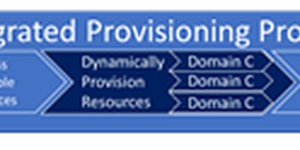
Whitepapers
The Economic Benefits of Automating Capacity Optimization in IP Networks
As network links grow from 100GE to 400GE and larger it is becoming more important to use autonomous capacity optimization to optimize network link capacity. Links that are underutilized can support more traffic; links that are over utilization should support less traffic. In this paper we present a solution to this problem using the Juniper Networks Paragon Automation. Peter Fetterolf presents the results of an ACG business model that compares two scenarios:
- With Paragon Automation
- Using brute-force capacity management
The total cost of ownership and return on investment model compares the capital expense and operations expenses of a hypothetical network and shows significant savings using a PCE to optimize traffic engineering. The cost of network bandwidth is exceedingly high such that TCO savings in optimizing the network pay for Paragon Automation many times over. Our results show an overall TCO savings of 27%. We also show that even a minor increase in average network utilization of 0.5% will pay for the total cost of the investment in Paragon Automation.
Contact Peter Fetterolf at pfetterolf@acgcc.com to discuss this paper or to develop a business model of your product.
You might like similar whitepapers


Orchestrating Dynamic Enterprise Services

Global Pricing for SD-WAN

Disruption Propelling Massive Changes in Video Market

The Economic Benefits of Virtual Edge Services

The Missing Guide in SP Managed Services Profitability

AUTOMATING 5G ACCESS DEPLOYMENTS

The Economic Benefits of Automating Capacity Optimization in IP Networks

Broadband Access Transformation

Accelerating Revenue and Innovation in CSPs' Distributed Clouds

Building Open, Scalable Service Delivery Infrastructures

THE ECONOMIC BENEFITS OF IP TRANSPORT AT 400G

Nuage/ALU on the VNS Solution in an SP Context

Itential Vendor Profile: Automation and Orchestration for Multi-Domain Networks

Building the Business Case for AI in Wireless Networks: Juniper Mist AI TCO Report

Segment Routing: An ACG Research Whitepaper

Achieving End-to-End Intelligence in the Cable Access Network

Lenovo: Data Center Switch Solutions for Enterprise Data Centers

Meet Market Needs with Software-Enabled Solutions

Tunnel-Based versus Tunnel-Free SD-WAN

Maximizing Efficiency Using Standards-Based, Model-Driven Infrastructures in NFV Deployments

Next-Generation Cloud Metro Network Requirements and Architectures

Hybrid Networks: Integrated Provisioning for Virtual and Physical Networks

THE BUSINESS CASE FOR ADAPTIVE IP

INTRODUCING xHAUL REWRITING THE PLAYBOOK FOR TRANSPORT NETWORKING IN THE RAN IN 5G

The TCO Benefits of Distributed Broadband Services with CUPS

Middle-Mile Networks Capacity Requirements for Fixed Broadband

An Approach to Offering Profitable Managed Network Services

Coriant’s Multi-Sided Platform Partner Program: Market Impact Report

5G Service Assurance: The Case for AIOps

AUTONOMOUS NETWORKS: NOW IS THE TIME

Huawei Autonomous Driving Network: Standards-Based but Differentiated

The Economic Benefits of Distributed Broadband Services

MODERNIZING THE CABLE SERVICE DELIVERY INFRASTRUCTURE

Understanding VRAN

THE POWER OF DIFFERENTIATION: BUILDING BROADBAND FOR 2021 AND BEYOND

The Driving Factors behind the Telecommunications Shift to Cloud Metro Networks

Always On, Active Analytics and AI for Superior Performance in Digitally Powered Enterprises

Virtualization Journey: Cable Companies Are on Their Way

A TCO Comparison of Private WANs vs Managed Network Services for Enterprises

The Evolution of Broadband Traffic: A Forecast for the Americas, EMEA, and APAC Regions

Comparing Broadband Network Architectures in the Evolving Connectivity Landscape

The Economic Benefits of a Super-Converged Multi-Access Edge Network

AUTONOMOUS NETWORKS POWER INDUSTRY 4.0

Key CommSoft Learnings from #MWC19

The Economic Benefits of Juniper Apstra and CN2 in a Modern 5G Network





